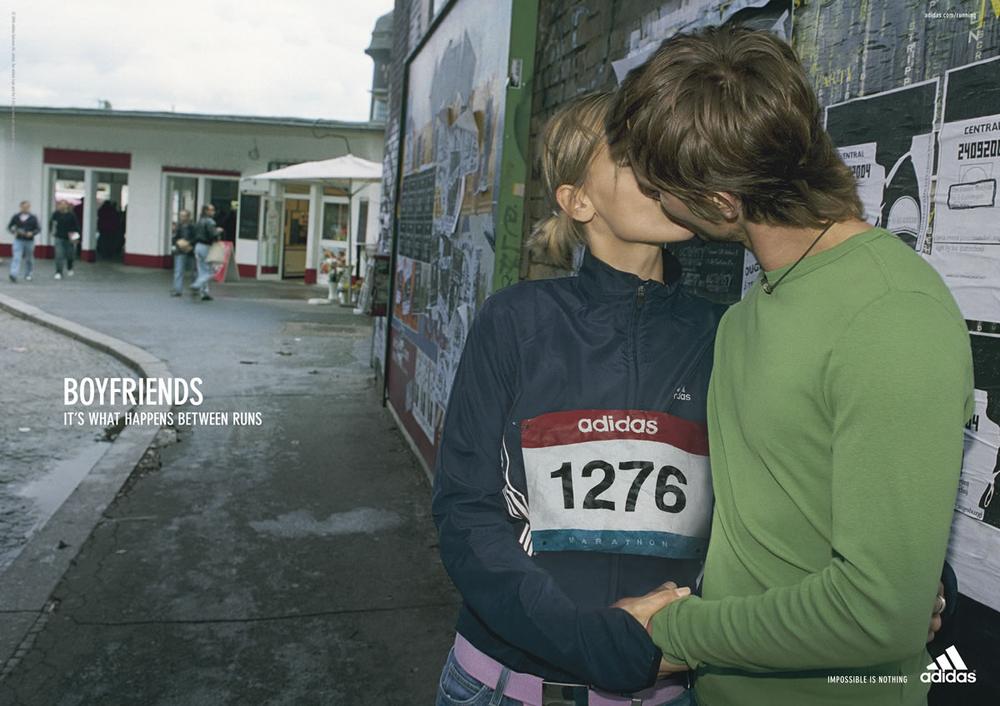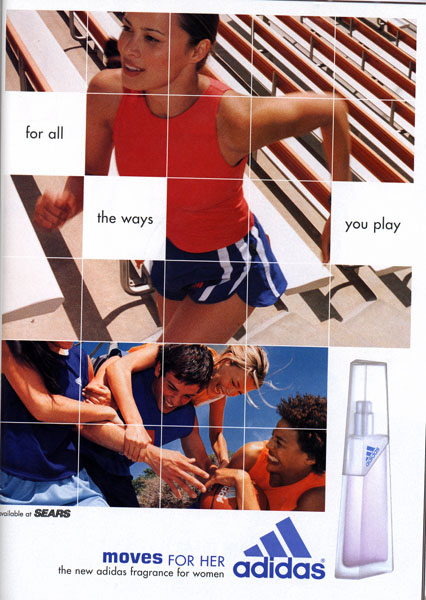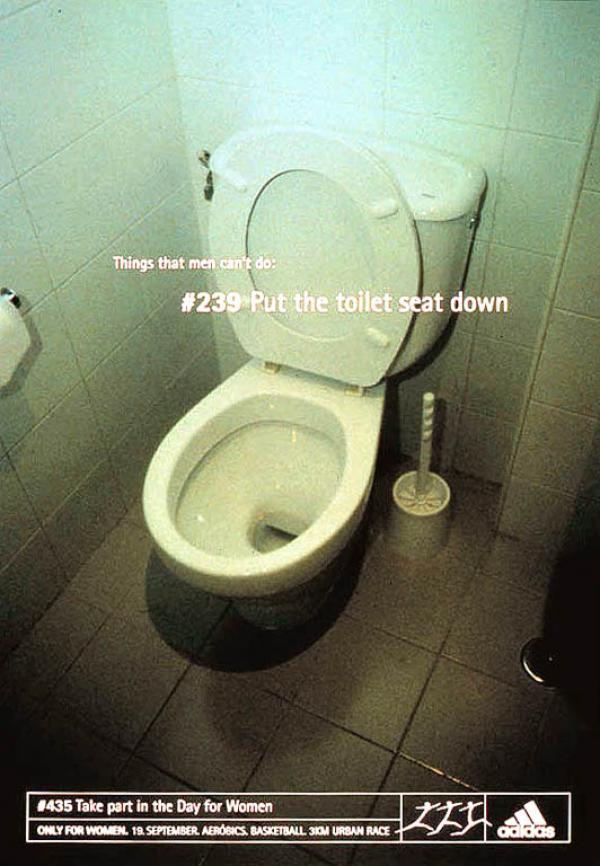




 |  |  | Heterosexuality is also something taken for granted among advertisers as this page highlights. For example the Champion advertisements show a close physical interaction that would hardly be mistaken for a brotherly-sisterly relationship. As seen, ADIDAS also focuses on heterosexual relationships as a norm in their advertisements. The image of the woman running makes this clear. Not only is the woman pushing a child, assumed to be her child through class discussions of contact and vicinity, but upon closer inspection she has a baby bump, and a shiny ring on her left ring finger. The couple on the bench with their child also portrays heterosexuality as the norm. Again these relationships are shown through vicinity, contact, and closeness. |
 |
The kissing advertisement I find ironic because she is actually wearing jeans when looked at closely, yet the text implies that she is the runner and he is the supportive boyfriend who is there to kiss on the side. This photo is an example of a photo taken out of context placed in a new context to form a new meaning. Adidas enforces heterosexuality by clearly labeling the guy as "boyfriend" and identifying her by a pony tail and purple belt. The perfume ad also shows heterosexuality in a different way because it more shows a group of flirtatious friends rather than an established relationship. This is shown by proximity to each other and that they are not paired off, as seen in the Baby advertisement. |  |
| Finally Adidas enforces heterosexuality and heterosexual norms with the photos (below), by making of things men can't do in the domestic sphere that is reserved for women. Women are again cast into the domestic sphere through an "inspiring message" that men can't do everything, including participating in the particular run advertised above, for women only. In her article on Household Labor in the South during reconstruction, Hunter points to some reasons why women might take jobs in the domestic sphere, rather than the public. Reasons like child rearing and raising, marriage, and time off were most frequent. This stigmatism still carries over today and the stereotype has stuck as we see in the advertisements below. | |
 |  |
Images (click)
Champion Ads
Baby Run
Boyfriend
Spray
Toilet Ads